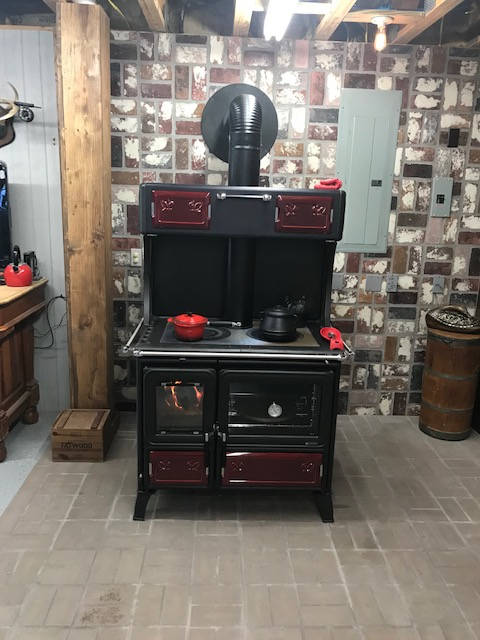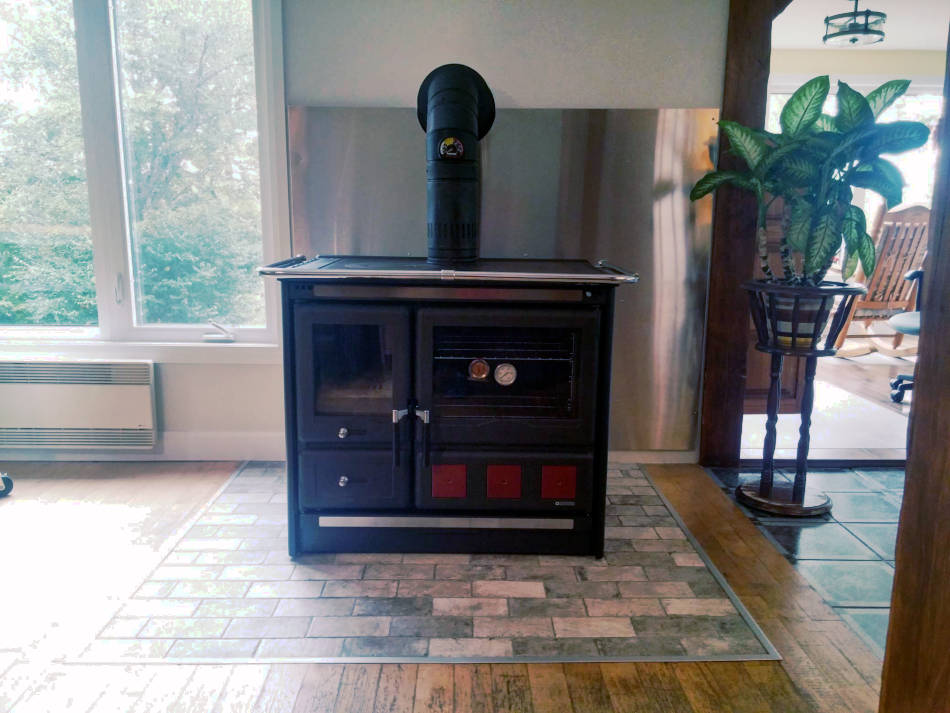Homeowners living in cold-weather areas should consider installing a wood burning stove to supplement their primary source of central heat. Today's wood-burning stoves are EPA rated and burn very cleanly. They are also much safer than space heaters or propane burners; their catalytic action creates less ash and creosote, leading to fewer chimney fires as long as there has been adequate flue maintenance. There are four other reasons to consider adding a wood burning stove to a home.
Burning wood is an economically feasible way to heat a home. According to statistics compiled by Purdue University, the purchase and installation of a catalytic wood burning stove pays for itself in reduced heating costs in three years, assuming a winter with temperatures that don't vary from the average. However, during particularly cold winters or extended periods of sub-zero temperatures, the ROI on a wood-burning stove is accelerated. Supplementing a central heating system with a wood-burning stove can reduce utility bills significantly and extend the life of fuels that must be prepaid and stored, such as liquid propane or fuel oil. A wood-burning stove can also eliminate the need to use central heat during late fall or early spring. Often, the daytime temperatures at these times brings the temperature of the home up to a comfortable level, and heat is only needed overnight. A wood fire easily takes the chill off.

A wood-burning stove is a dependable heat source during power outages. In those areas of the country that experience ice storms during winter or early spring, a wood-burning stove may be the only heat source that works. Modern gas, oil and propane furnaces come equipped with electronic pilot lights, and their blowers are driven by electricity. Electric baseboard heat or underfloor heat is also reliant on a steady, consistent flow of power. During periods of widespread power outages, a wood-burning stove can generate enough heat to keep residents comfortable and prevent water lines from freezing and bursting.
Wood is a renewable form of fuel. With concerns over the supplies of fossil fuels such as coal, oil and natural gas, wood is a carbon-based fuel that is regenerated annually. The farmer who maintains a woodlot thinks, plans and farms on a long-term basis; tree cultivation and harvest, if done correctly, provides an income for life. In addition, firewood sold in any area is likely to be locally sourced and sold by a local entrepreneur. Firewood purchases stimulate and support the local economy and generate revenue for small farmers during their off-season.
Finally, a wood stove has esthetic value. The new models are not only designed to burn efficiently, but also to match home styles and décor. Today's stoves offer construction that marries easily with traditional and modern home designs, and unlike their predecessors, come in colors other than black. In addition, a wood fire creates a comfortable and welcoming ambiance to any environment.

Wood burning stoves are most effective in homes that have an open floor plan. Ceiling fans and baffles help to circulate the heat throughout the house. A contractor that specializes in fireplace renovations can provide expert advice on purchasing and installing a wood stove.

